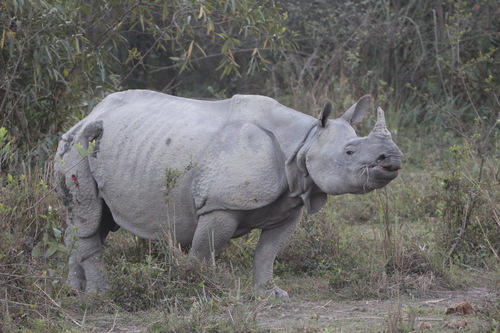
Indian Rhinoceros
The majestic Rhinoceros unicornis, with its iconic single horn and thick, folded skin, roams the grasslands of India and Nepal. This solitary grazer, crucial to its ecosystem, often bathes in mud to cool down and repel insects, showcasing unique social interactions and displays.
45-50 years
Lifespan
2200.0 - 3000.0 kg
Weight
Length: 1.7 - 2.0 m
Size
Brown, Grey, Black
Color
30 mph
Top Speed
Vulnerable
Conservation Status
Increasing
Population Trend
Characteristics
The Indian rhinoceros, Rhinoceros unicornis, is renowned for its single horn and armor-like skin folds. Inhabiting the grasslands and forests of the Indian subcontinent, it is a grazer and plays a crucial role in shaping its ecosystem. Often seen wallowing in water, this species is solitary yet known for its impressive social displays.
Distribution Range of the Indian Rhinoceros
Rhinoceros unicornis, commonly known as the Indian rhinoceros or greater one-horned rhinoceros, is native to the Indian subcontinent. Its geographical distribution primarily includes parts of India and Nepal, with historical ranges extending to Bhutan, Bangladesh, and Pakistan.
Indian Rhinoceros's Habitat
Environmental Conditions
The Indian rhinoceros typically inhabits the alluvial floodplains of the Terai region and the Brahmaputra basin. These areas are characterized by tall grasslands, swamps, and dense riverine forests. The climate in these regions varies, with a monsoon season bringing heavy rainfall, followed by a dry winter and a hot, humid summer.
Ecological Niche
As a mega-herbivore, the Indian rhinoceros plays a crucial role in its ecosystem by influencing the structure of vegetation and maintaining the health of its habitat. It primarily feeds on grasses, fruit, leaves, and shrubs, contributing to the dispersal of seeds and the maintenance of plant diversity. Its preference for grasslands and the ability to swim well make it suited to floodplain environments.
Copyright @ Nature Style Limited. All Rights Reserved.
 English
English